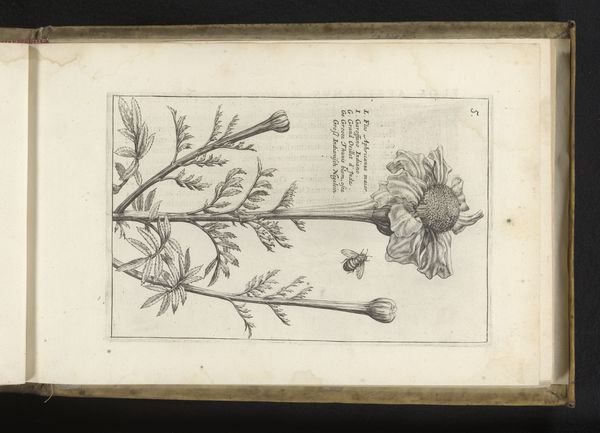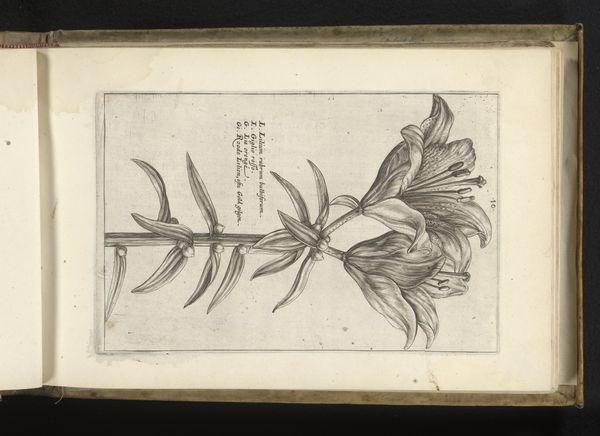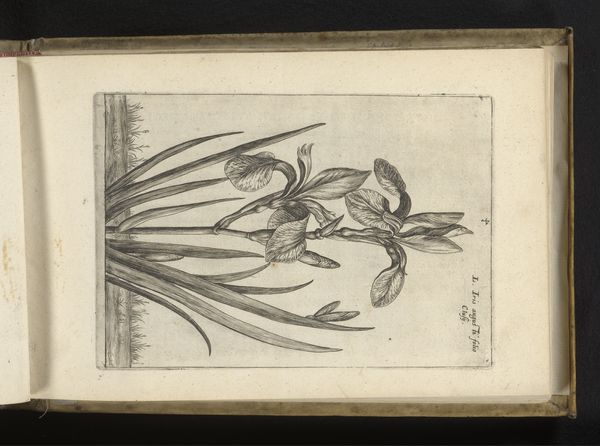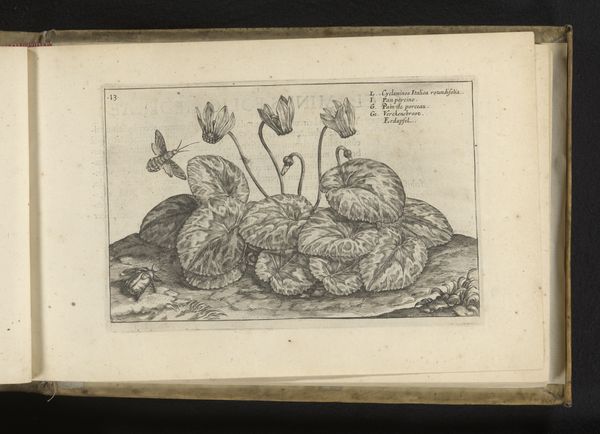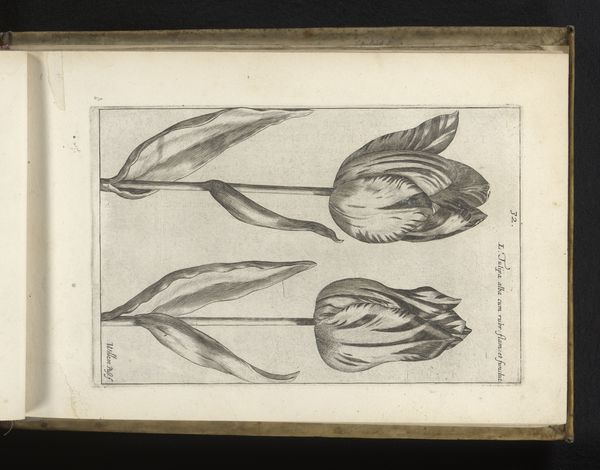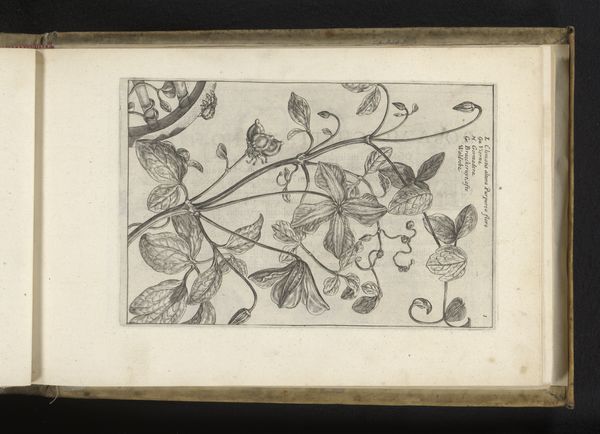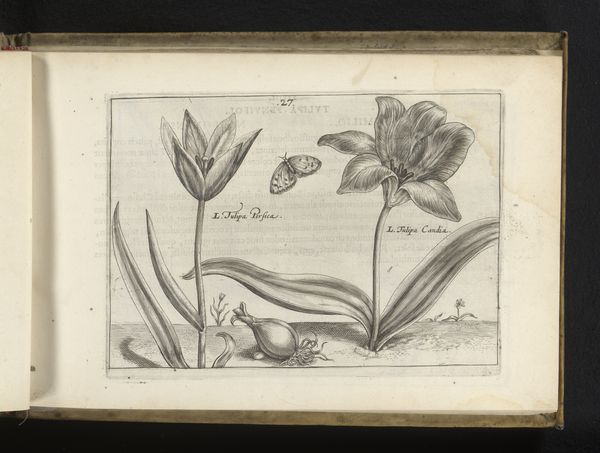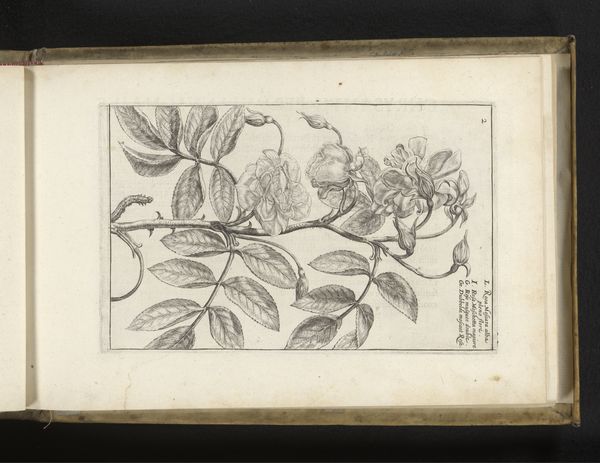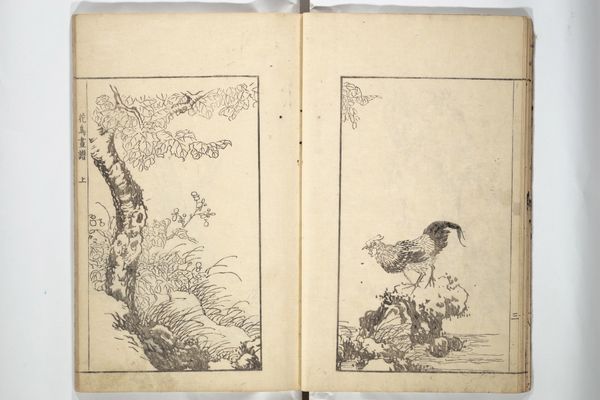
drawing, print, ink, engraving
#
drawing
#
aged paper
#
toned paper
#
baroque
# print
#
sketch book
#
flower
#
personal sketchbook
#
ink
#
pen-ink sketch
#
pen and pencil
#
pen work
#
sketchbook drawing
#
storyboard and sketchbook work
#
sketchbook art
#
engraving
Dimensions: height 210 mm, width 147 mm
Copyright: Rijks Museum: Open Domain
Crispijn van de Passe the Younger made this engraving of an iris sometime in the 17th century. Though seemingly a straightforward depiction of nature, botanical illustration in the Dutch Golden Age carried immense social and cultural weight. The Dutch developed a profound interest in the natural world, fueled by the wealth and global trade networks of the Dutch East India Company. Exotic plants and flowers, like this iris, became symbols of status and scientific curiosity. Manuals of this kind fed a booming market for luxury gardens and floral arrangements. The precision and detail in this print speak to the era's emphasis on empirical observation. But it is important to remember that art institutions like the Haarlem Guild of Saint Luke helped structure the production of these images. To learn more, look into the history of Dutch science, horticulture, and the art market of the period. It reveals that the beauty of this image is closely tied to social and economic change.
Comments
No comments
Be the first to comment and join the conversation on the ultimate creative platform.
